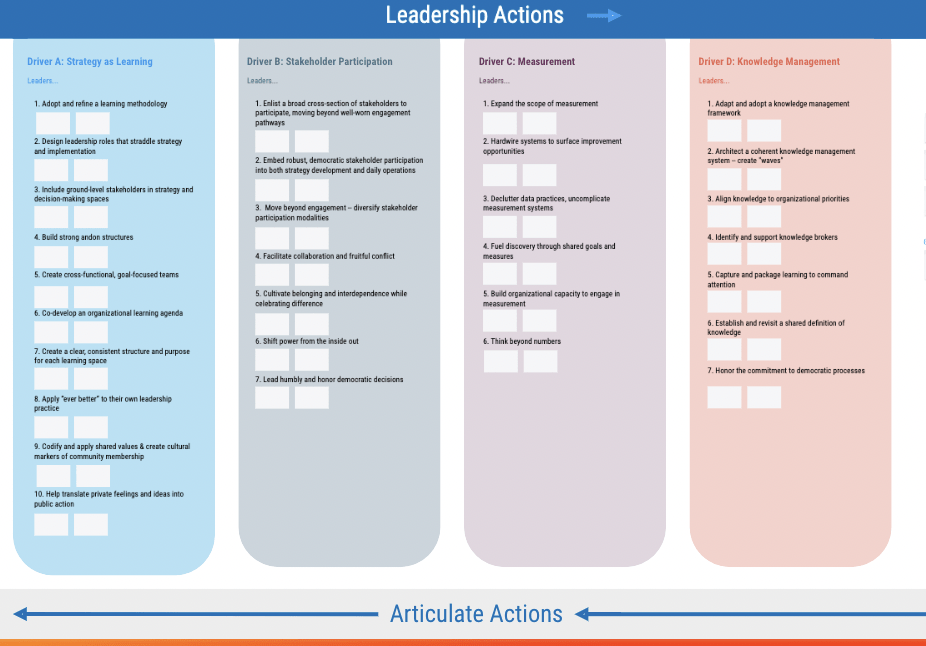Populate your Theory of Leadership short- and long-term goals
Timing - 2 Hours
In this activity, you will identify the short- and long-term goals that you predict you will achieve as a result of your leadership approach.
Back to Phase 2 overviewOverview:
With your system vision in hand, your team is ready to begin developing your detailed leadership approach—something we call a Theory of Leadership.
In this step, you will draw from a list of short-term goals (smaller-scale changes you expect will lead to your desired impact—e.g., changes in attitudes, behaviors, and conditions) and long-term goals (larger-scale changes you aim to achieve through your leadership approach) common in systems with a strong learning leadership practice. You’ll:
- outline the shorter-term learning and improvement behaviors, mindsets, and conditions you hope to foster in your system, and
- make predictions about how those behaviors will change the way your system operates in the longer term.
Let’s get started.
Tools & Materials
Suggested Preparation
- Review the Theory of Leadership tool
Need support? Learn more about working with CPRL.
Protocol
Customize your Theory of Leadership short- and mid-term goals
Navigate to the short-term goals section of the Theory of Leadership activity template, and discuss the prepopulated sticky notes.
The pre-populated sticky notes on the Theory of Leadership tool represent common features of and mindsets and behaviors present in effective learning systems.
As a full group, discuss each short-term goal in turn. As necessary, tailor the language in each so it is representative of the short-term goals you are pursuing in your own system.
As you reflect on each short-term goal, consider the degree to which stakeholders in your system demonstrate each one. Code each sticky note using the following color scheme:




Once you have reviewed and coded all the pre-populated sticky notes, drag any you’ve coded in gray to the Parking Lot on the right side of the activity template.
Review and organize your remaining outcomes.
If you notice that any important short-term goals are missing, capture them on new sticky notes.
Group and organize your short-term goals in a way that makes sense for your team. It may be helpful to order goals from near to far term, listing those that you are closest to achieving at the top, those that are furthest out at the bottom, and others in roughly chronological order in between.
Populate your Theory of Leadership long-term goals
Reflect on the following question:
Thinking back to the vision you developed in the last step, consider: In the long term, how will our system (team, organization, network) function if we’re able to achieve our short-term goals?
Review the prepopulated long-term goals on the Theory of Leadership tool, and tailor the language to your own context. Consider the following questions:
- Where might it be helpful to get more specific? Refine the language used in each long-term-goal sticky note as needed.
- Are there any important long-term goals missing? Add them to your list on new sticky notes.

